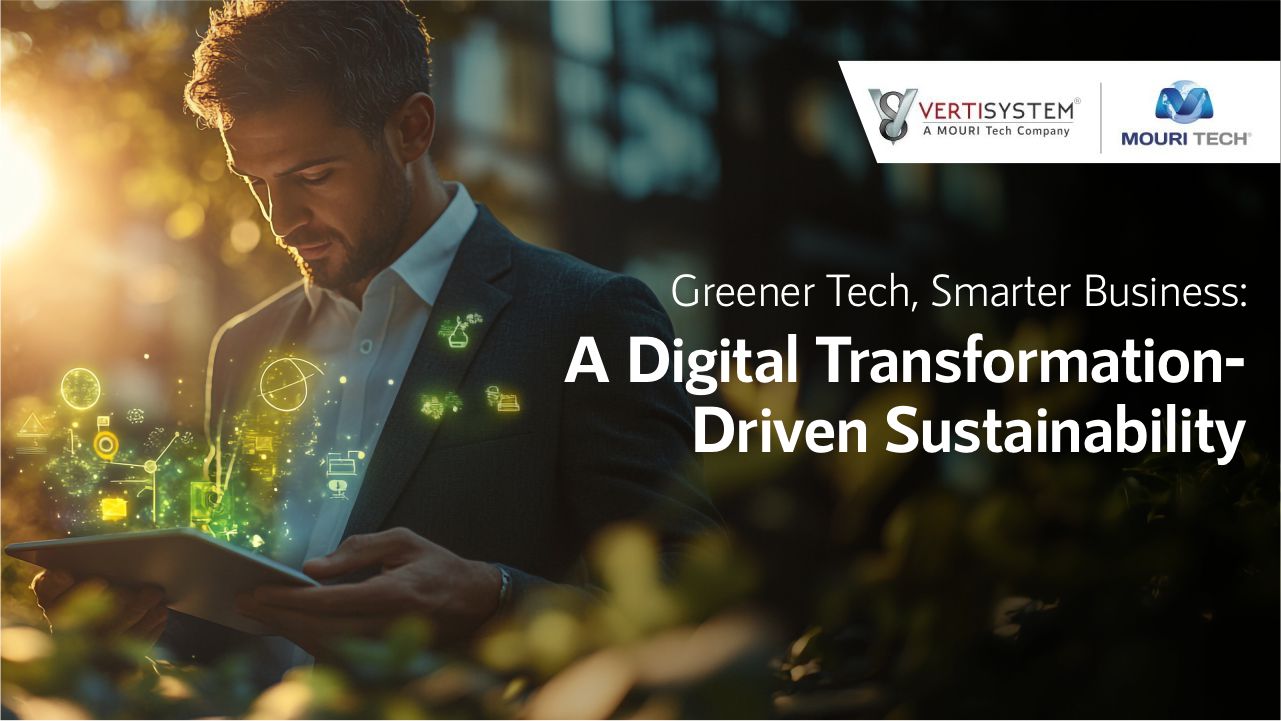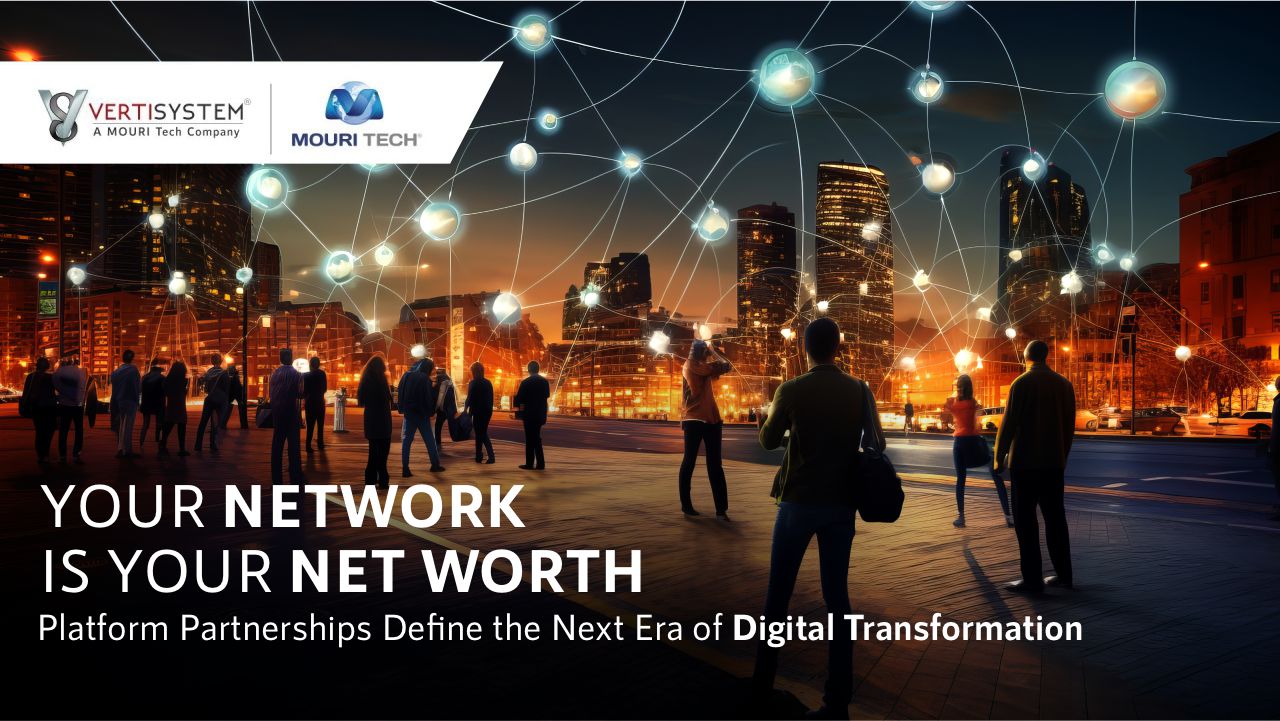As enterprises accelerate their digital transformation journeys, the environmental impact of IT infrastructure has come under increasing scrutiny. Data centers, cloud services, and AI workloads are significant contributors to global carbon emissions. Vertisystem (A MOURI Tech Company), is committed to helping businesses reduce their carbon footprint through sustainable digital solutions.
Data centers are responsible for approximately 1% of global energy-related greenhouse gas emissions. With the rapid growth of AI and cloud computing, electricity demand from data centers is projected to more than double by 2030, reaching around 945 terawatt-hours (TWh). This surge underscores the need for sustainable practices in IT operations.
-
A: Cloud Migration: A Path to Sustainability
Migrating workloads to the cloud can significantly reduce energy consumption and emissions. For instance, Microsoft reports that moving applications to the cloud can lower carbon emissions significantly. Vertisystem’s cloud solutions help businesses transition from energy-intensive on-premises systems to more efficient cloud infrastructures.
In a world increasingly reliant on digital infrastructure, traditional on-premises data centers are fast becoming both a financial and environmental liability. They consume vast amounts of electricity to power and cool servers—often relying on outdated hardware and inefficient designs. This not only drives up operational costs but also significantly contributes to carbon emissions.
The Problem with On-Premises Infrastructure
- High Energy Consumption: Legacy data centers operate at lower efficiency levels (often with Power Usage Effectiveness or PUE ratios exceeding 2.0), meaning they use more than twice the energy for non-computing tasks like cooling and backup systems.
- Underutilization: Most on-premises servers run at just 10–30% utilization, wasting energy on idle capacity. Businesses pay for peak-load capabilities they rarely use.
- Limited Scalability: As businesses grow, scaling infrastructure on-premises means more hardware, more space, and more power—compounding both cost and carbon output.
- Maintenance Emissions: Frequent hardware upgrades and maintenance not only incur high costs but also create electronic waste and increase the carbon footprint from supply chain logistics.
How Cloud Migration Solves This
- Shared Infrastructure Efficiency: Cloud providers like AWS, Azure, and Google Cloud operate hyperscale data centers with state-of-the-art energy efficiencies. AWS, for instance, reports up to 80% lower energy usage than traditional enterprise data centers.
- Renewable Energy Commitment: Major cloud platforms are increasingly powered by renewables. Google Cloud already matches 100% of its energy use with renewable purchases, and Azure is aiming for 100% renewable energy by 2025.
- Elasticity Reduces Waste: Cloud services are pay-as-you-go. Businesses only use—and pay for—the compute power they need, reducing idle server energy use.
- Smart Resource Allocation: With auto-scaling, workload optimization, and containerization (e.g., Kubernetes), cloud environments automatically optimize performance and energy use
Vertisystem’s cloud migration services are tailored to maximize these benefits. We assess your current infrastructure, identify inefficiencies, and execute migrations that align with both sustainability and business growth goals.
-
B: Data Modernization: Efficient Resource Utilization
Data is the new oil—but without proper refinement, it clogs up systems, drains resources, and stifles innovation. Many organizations still rely on fragmented, outdated, or redundant data systems that not only hinder agility but also consume excessive amounts of energy and storage capacity.
Modernizing data infrastructure is crucial for sustainability. By consolidating data, eliminating redundancies, and optimizing storage, businesses can reduce energy usage. Implementing data minimization strategies and moving infrequently accessed data to cold storage can further decrease the environmental impact.
The Problem with Legacy Data Systems
- Redundant and Obsolete Data: Up to 60–80% of enterprise data is either redundant, obsolete, or trivial (ROT), yet it occupies costly storage and requires regular backups and security scans.
- Data Silos: Different departments using separate systems lead to siloed data that increases duplication, slows down decision-making, and necessitates additional storage and compute resources.
- Overprovisioned Storage: Traditional storage methods often allocate excess capacity “just in case,” leading to underutilization and higher energy use across servers and cooling systems.
- Manual Data Pipelines: Legacy data processing workflows demand more human and machine intervention, resulting in inefficient compute cycles and higher emissions.
How Data Modernization Reduces Environmental Impact
- Data Consolidation & Deduplication: Centralizing data from multiple systems into unified cloud platforms like Snowflake or Azure Synapse allows businesses to eliminate ROT and reduce storage needs by up to 40%.
- Tiered & Intelligent Storage: Cold storage solutions automatically move infrequently accessed data to low-cost, low-energy environments—saving up to 60% in energy and cost over hot storage.
- Real-Time Data Architecture: Using modern data lakes and stream processing (e.g., Kafka, Databricks), businesses avoid batch-heavy jobs and process data only when needed, reducing unnecessary compute cycles.
- AI/ML-Driven Data Governance: Automated data classification, lineage, and lifecycle management optimize usage, compliance, and retention—minimizing processing waste and risk.
-
C: AI Optimization: Balancing Performance and Energy Use
As AI adoption skyrockets across industries, so does its energy footprint. Training a single large AI model (like GPT-3) can emit as much carbon as five cars over their entire lifetimes. While AI delivers incredible performance gains, without optimization, it risks becoming a sustainability liability.
AI workloads are energy-intensive, with training large models consuming vast amounts of electricity. However, optimizing AI processes can lead to significant energy savings. Techniques such as demand-aware scheduling and energy-efficient algorithms can reduce the carbon footprint of AI operations . Vertisystem leverages these strategies to ensure AI deployments are both effective and sustainable.
The Problem with Unoptimized AI Workloads
- Excessive Compute Demands: Deep learning models, especially in NLP and computer vision, require billions of parameters and massive training datasets, consuming enormous GPU and CPU cycles.
- Frequent Retraining: In industries like finance or healthcare, models are retrained frequently with new data—multiplying energy use without significant performance improvement.
- Lack of Model Lifecycle Management: Many enterprises lack systems to retire or recycle old models, leading to unnecessary model sprawl and compute wastage.
- Inefficient Inference Pipelines: Real-time AI applications (e.g., chatbots, fraud detection) often use over-provisioned infrastructure, keeping systems running 24/7 at suboptimal capacity
How AI Optimization Drives Sustainability
- Model Compression & Distillation: Techniques like quantization, pruning, and knowledge distillation reduce model size and power requirements while maintaining accuracy.
- Demand-Aware Scheduling: Workloads are dynamically scheduled based on energy availability or cost—e.g., training large models during off-peak hours or in regions with renewable energy sources.
- Edge AI Deployment: Shifting inference workloads to edge devices reduces latency and avoids continuous cloud GPU use, minimizing energy consumption.
- Green AI Frameworks: Platforms like Hugging Face’s “carbon-aware” models or Nvidia’s low-power GPUs are now industry standards for sustainable AI development.
- Automated ML Ops: Vertisystem’s AI Optimization services integrate smart retraining triggers, performance monitoring, and carbon tracking into the model lifecycle—ensuring only high-impact, efficient models are deployed.
Take Action: Evaluate Your IT Infrastructure’s Environmental Impact
Understanding and mitigating the environmental impact of your IT operations is essential. Vertisystem offers comprehensive assessments to help businesses identify areas for improvement and implement sustainable solutions. By partnering with Vertisystem, organizations can align their digital transformation goals with environmental responsibility.
Ready to embark on a greener digital journey?
Contact us to learn how our sustainable solutions can transform your IT infrastructure for a better tomorrow.



